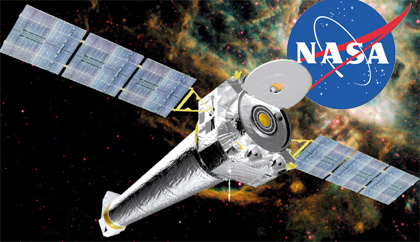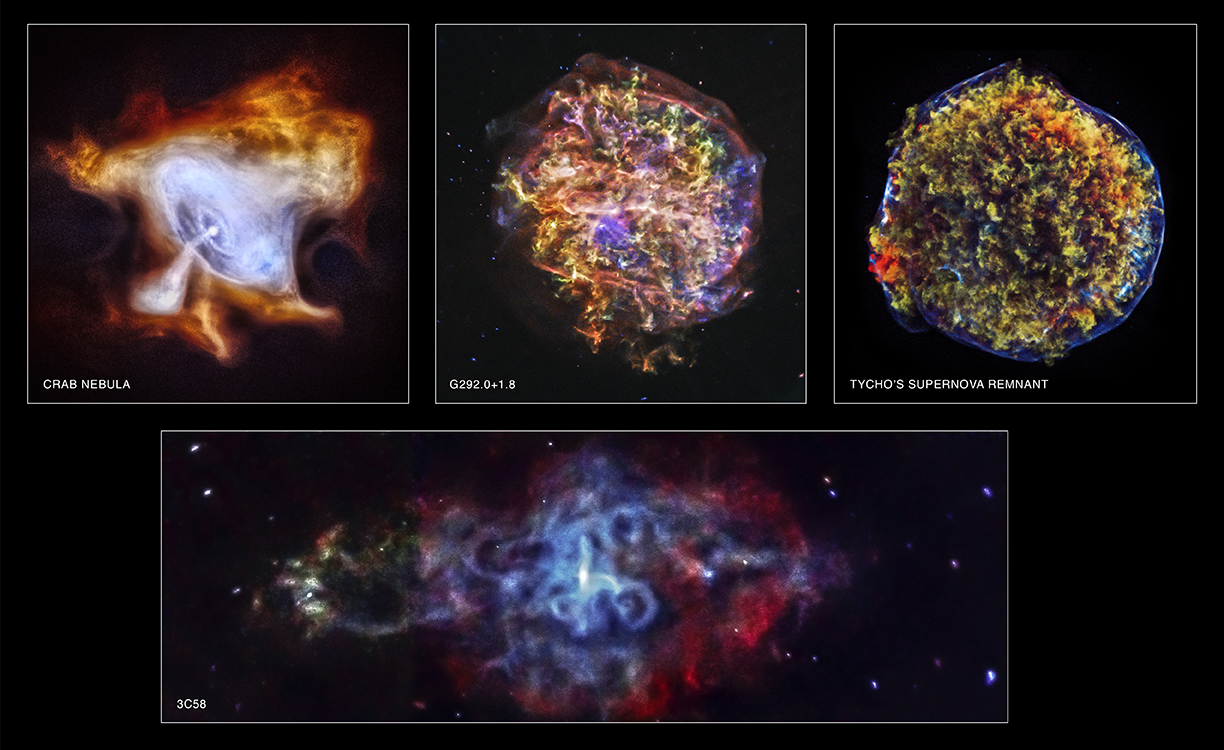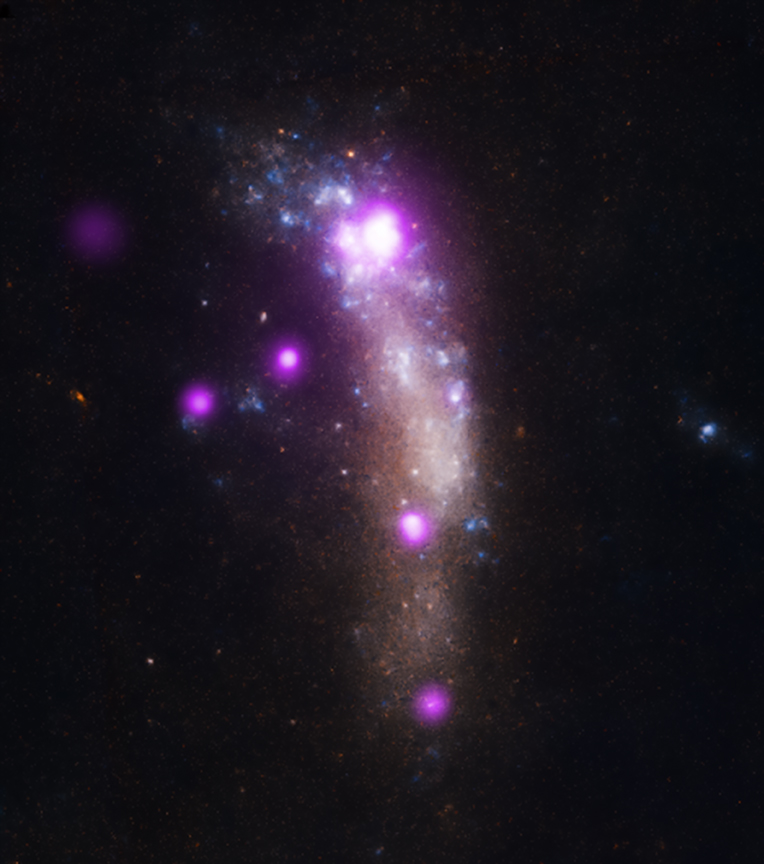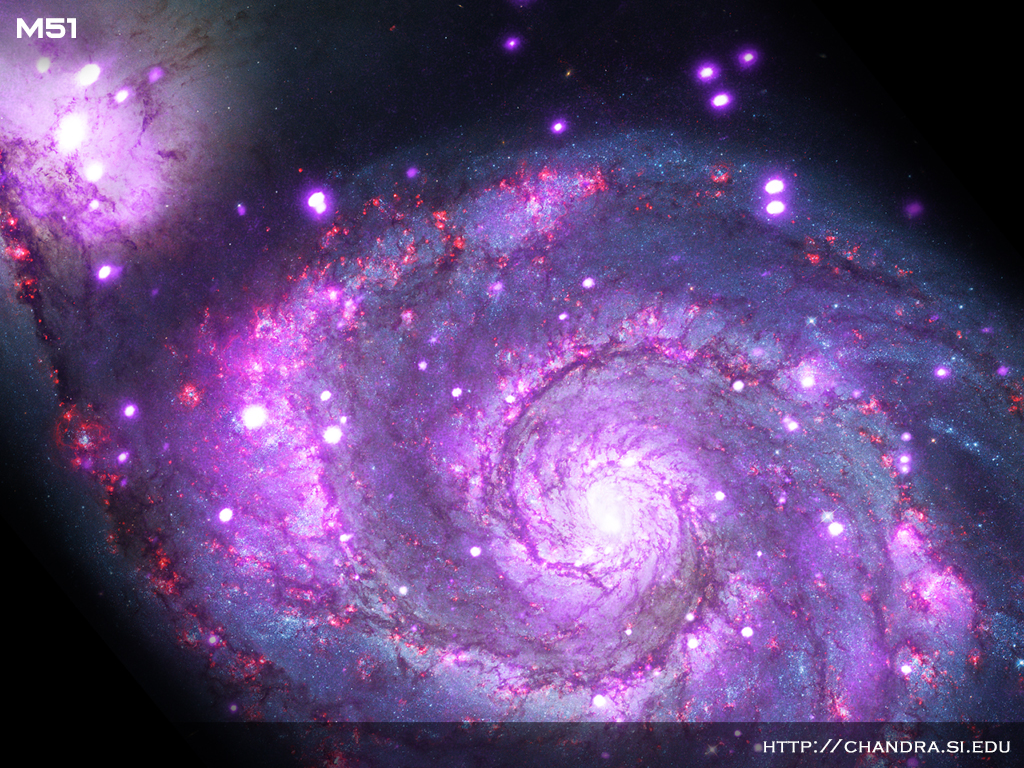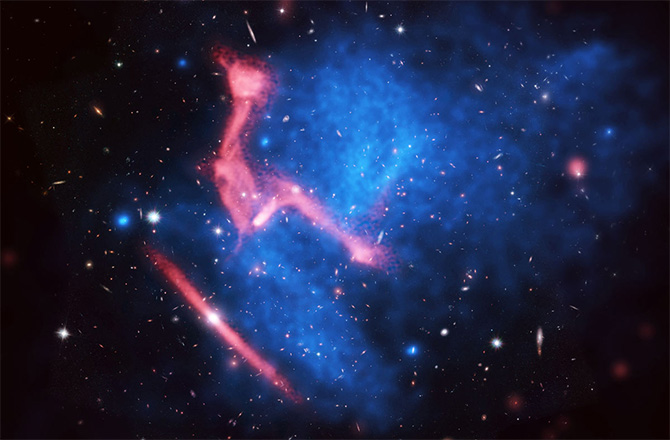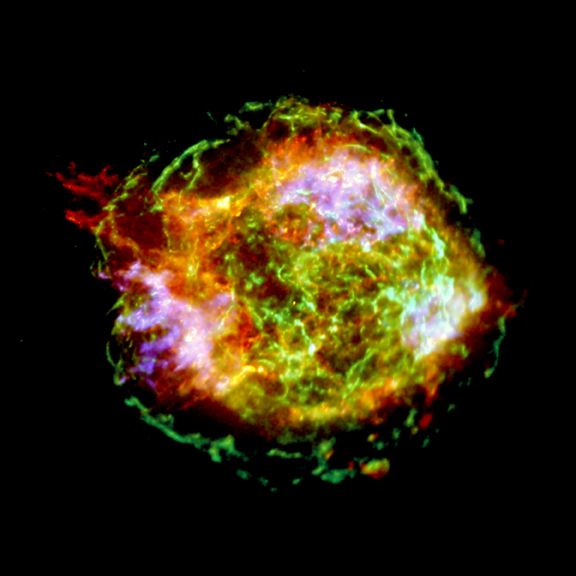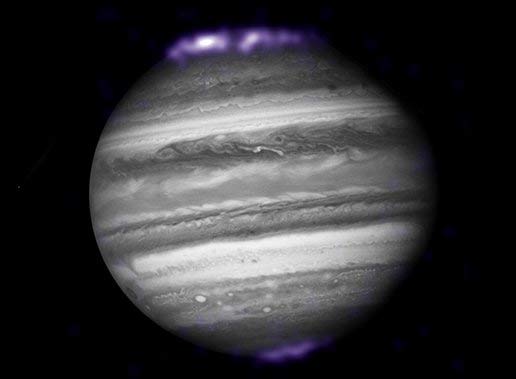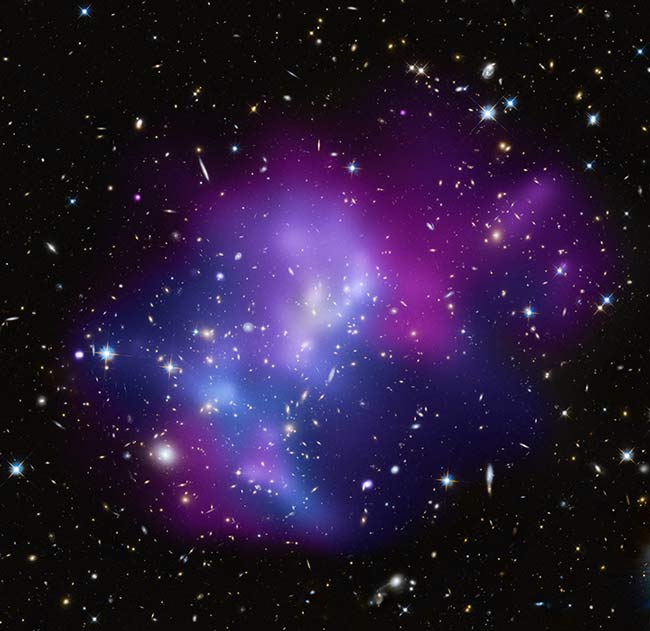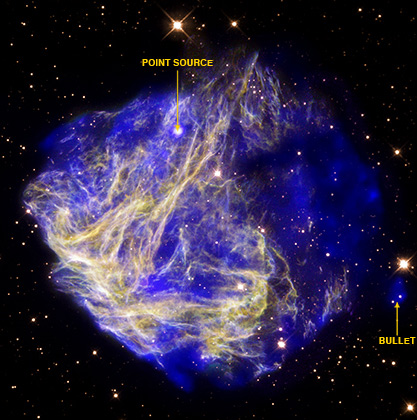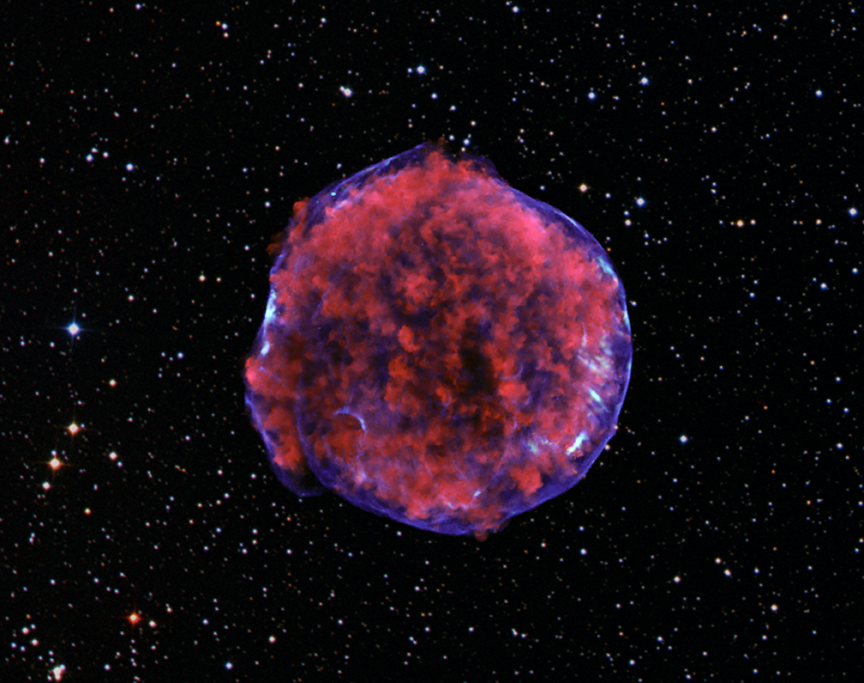Our X-Ray Universe: Amazing Photos by NASA's Chandra X-Ray Observatory
X-ray Space Telescope Gets Longer Lease on Life
An artist's interpretation of NASA's Chandra X-Ray Observatory, which launched in 1999 and has received an extended mission through at least 2013. The space telescope has captured amazing views of the universe in X-ray vision. Here's a taste of Chandra's cosmic views.
NASA’s Chandra X-ray Observatory Celebrates 15th Anniversary
To mark the 15th anniversary of NASA's Chandra X-ray Observatory, researchers released four newly processed images of supernova remnants that show Chandra's ability to explore high-energy processes in the cosmos. Image released July 22, 2014.
Composite Image of Supernova SN 2010jl
A composite image of the supernova SN 2010jl within its galaxy shows X-ray observations from the Chandra X-ray Observatory (in purple) and optical data from the Hubble Space Telescope. SN 2010jl appears as the bright purple spot at the top of the galaxy.
Colliding Galaxy Clusters MACS J0717+3745
The Chandra X-ray telescope captured this stunning view of Messier 51.
Colliding Galaxy Clusters MACS J0717+3745
Colliding galaxy clusters MACS J0717+3745, more than 5 billion light-years from Earth. Background is Hubble Space Telescope image; blue is X-ray image from Chandra, and red is VLA radio image.
Inside the Flame Nebula
This composite image shows one of the clusters, NGC 2024, which is found in the center of the so-called Flame Nebula about 1,400 light years from Earth. In this image, X-rays from Chandra are seen as purple, while infrared data from NASA's Spitzer Space Telescope are colored red, green, and blue. Image released May 7, 2014.
Exploded Star Detailed in New X-ray Image
In the new Chandra image of Cassiopeia A, gas billowing out from the supernova remnant is superheated, causing it to glow in X-rays. A reddish-colored jet of superfast matter can be seen shooting out of the upper left. A second jet, not notable in this image, was ferreted out in other data collected during the same observations.
Breaking space news, the latest updates on rocket launches, skywatching events and more!
New X-ray Image Shows Jupiter's Powerful Sky Lights
X-ray auroras observed by the Chandra X-ray Observatory overlaid on a simultaneous optical image from the Hubble Space Telescope.
NASA Spots Most Crowded Space Collision Ever
The most crowded collision of galaxy clusters has been identified by combining information from NASA's Chandra X-ray Observatory, Hubble Space Telescope and the Keck Observatory on Mauna Kea, Hawaii. The system MACSJ0717.5+3745 (or MACSJ0717 for short) is located about 5.4 billion light years from Earth.
Cosmic Bullet Fired by Exploding Star
This annotated image from the Chandra X-Ray Observatory shows N49, the aftermath of a supernova in the Large Magellanic Cloud, and a bullet-like object ejected from the huge star explosion. Full Story.
X-ray Stripes in Tycho Supernova
This image comes from a very deep Chandra observation of the Tycho supernova remnant. Low-energy X-rays (red) in the image show expanding debris from the supernova explosion and high energy X-rays (blue) show the blast wave, a shell of extremely energetic electrons. These high-energy X-rays show a pattern of X-ray "stripes" never previously seen in a supernova remant.

Space.com is the premier source of space exploration, innovation and astronomy news, chronicling (and celebrating) humanity's ongoing expansion across the final frontier. Originally founded in 1999, Space.com is, and always has been, the passion of writers and editors who are space fans and also trained journalists. Our current news team consists of Editor-in-Chief Tariq Malik; Editor Hanneke Weitering, Senior Space Writer Mike Wall; Senior Writer Meghan Bartels; Senior Writer Chelsea Gohd, Senior Writer Tereza Pultarova and Staff Writer Alexander Cox, focusing on e-commerce. Senior Producer Steve Spaleta oversees our space videos, with Diana Whitcroft as our Social Media Editor.
